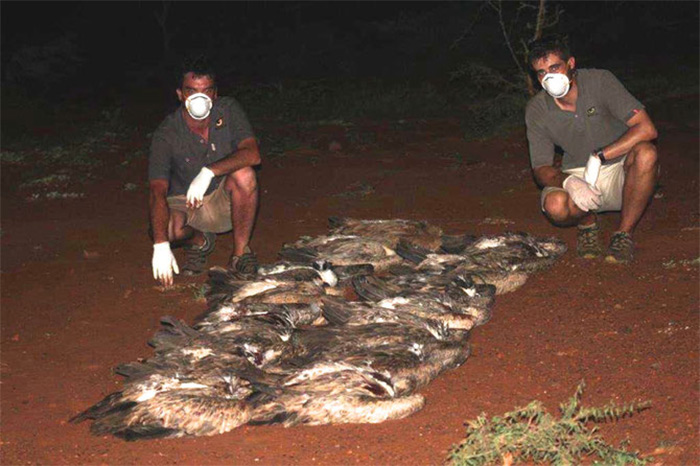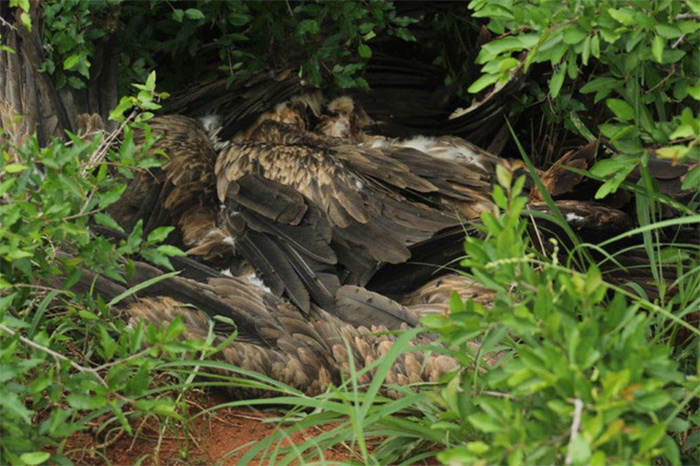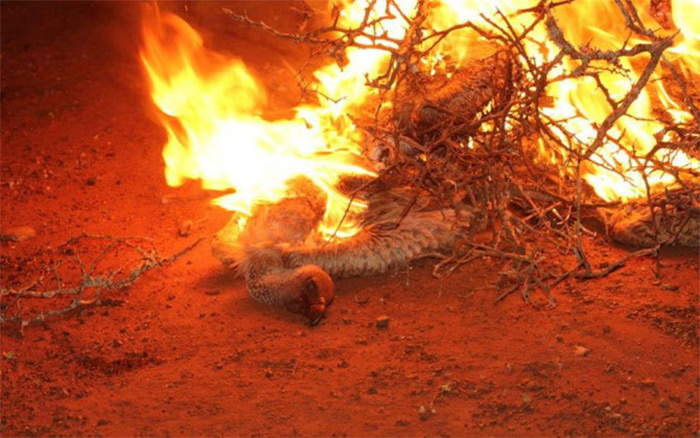Another mass poisoning in Zululand causes alarm for the future of vultures in the region
Unfortunately, yet another mass poisoning incident occurred in Africa, ending 2019 on a sad note for vulture conservation. Two days before Christmas in Northern Zululand, 16 vultures met a tragic fate. The continuation of such poisoning incidents are causing alarm for the region's diminishing vulture populations fearing that they could face extinction. This has been an overall unfortunate year for vultures affected by poisoning in Africa, with more than 1,200 vultures estimated to have been deliberately poisoned across Southern and Eastern Africa, according to the Endangered WildLife Trust (EWT).

Latest mass poisoning in Zululand
Just after releasing two rehabilitated vultures rescued from a different poisoning incident, WildLife ACT was alerted with another episode on 23 December in KwaZulu-Natal. Fifteen White-backed Vultures (Gyps africanus) and a young Lappet-faced Vulture (Torgos tracheliotos) were killed after feeding on a poison-laced impala carcass.
"Arriving at a scene like this with everything so fresh, but too late to assist in saving any poisoned birds is heartbreaking. Losing one vulture is always a tragedy. Losing at least 16 birds at one feeding is a crisis," said PJ Roberts, manager of Wildlife ACT's Emergency Response Team.

Wildlife ACT works closely with Ezemvelo KZN Wildlife, local farmers and communities, and other conservation groups to protect the Critically Endangered White-headed Vulture and White-backed Vulture, and the Endangered Lappet-faced Vulture in KwaZulu-Natal.
The first dead bird found was a White-backed Vulture that had a full crop (still containing undigested food), contorted feet and many dead flies around it, indicating the use of fast-acting poison. The team swept the area on the ground, but it needed an aerial search to locate more victims. "We landed to find the devastating remains of multiple birds hidden at the base of the tree. Included in this discovery was the removed, yellow, wing tags of H065; a young Lappet-faced Vulture tagged in Hluhluwe-iMfolozi Park in October 2017 as a fledgling. No more than 30m away, the morbid discovery of 13 processed and harvested White-backed Vultures, with their heads and feet removed, were found very purposefully hidden in a thick bush," said Roberts.
The situation suggested that the vultures were deliberately poisoned for belief-based use. "The vultures are killed for their heads and feet and other parts. This is definitely the single biggest threat to diminishing vulture populations in this province," said Chris Kelly, a species director at Wildlife ACT. In many parts of Africa, vulture body parts are believed to provide medicinal benefits, have psychic powers, and even bring luck. Their parts are consumed for different reasons across Africa, and so poachers kill vultures to sell their body parts.

To prevent any more casualties, the rangers burned all the contaminated carcasses to ash to remove the poison from the ecosystem.
This incident was the fourth vulture poisoning in northern Zululand this year, bringing the total recorded number of vultures harvested for body parts in this region alone to 53. The actual number of birds killed is believed to be much higher as many incidents are never detected.
2 January 2020
Source: Vulture Conservation Foundation
Share this story




